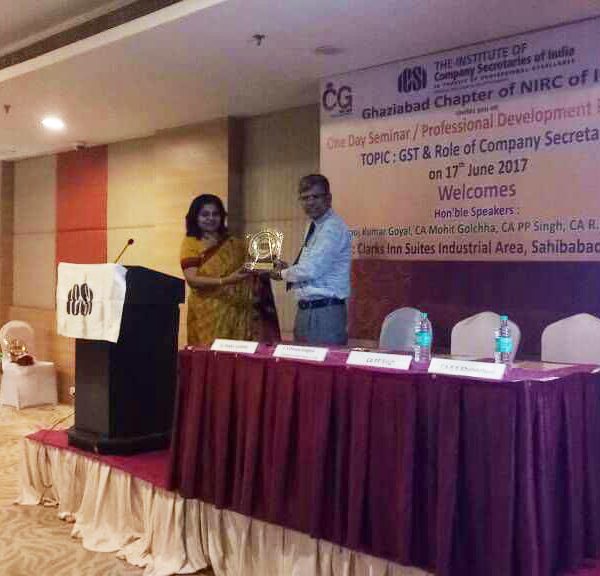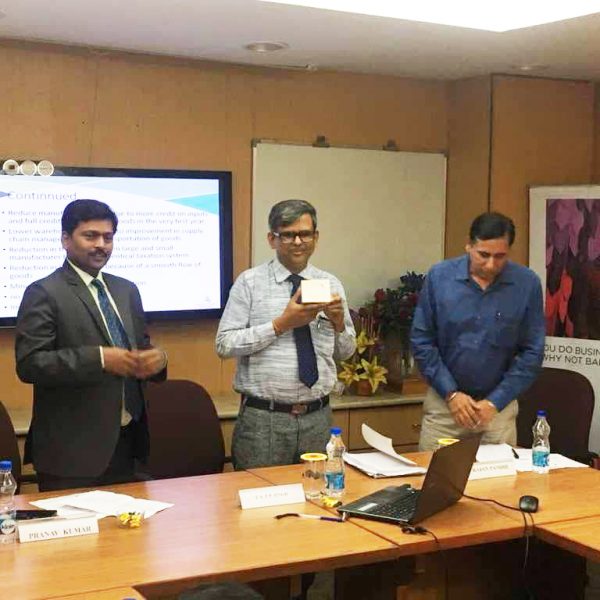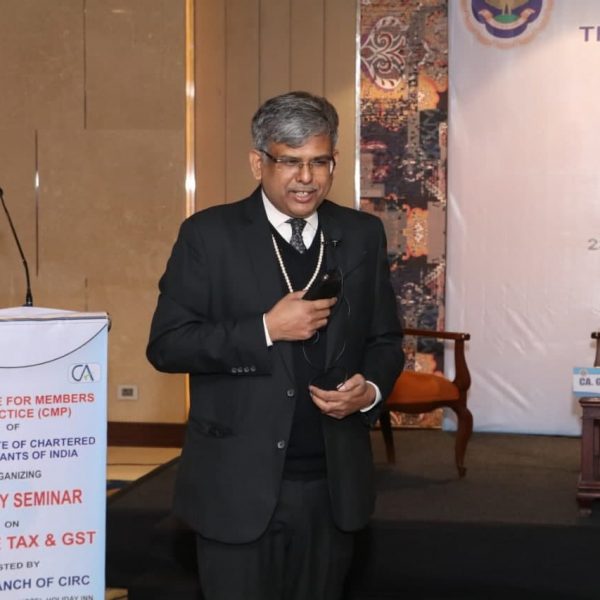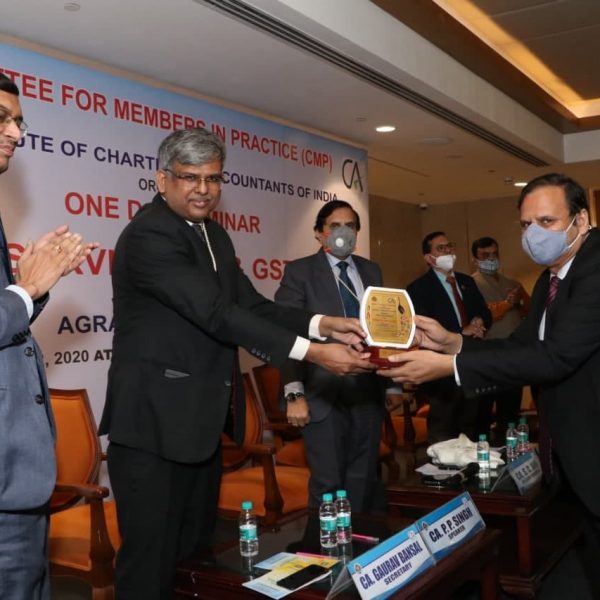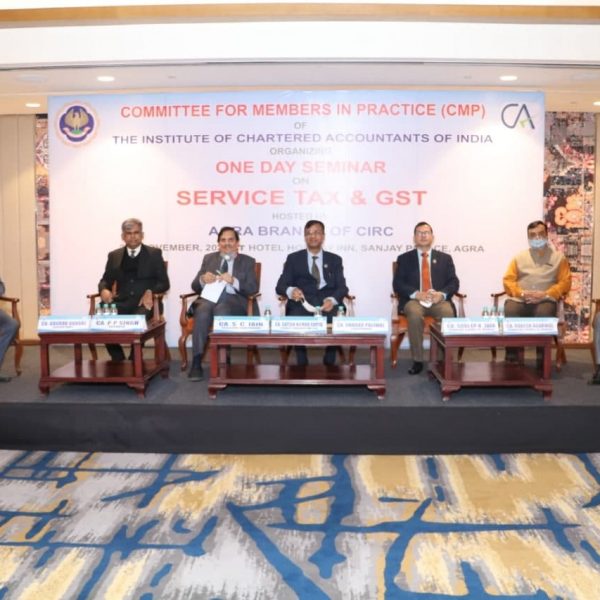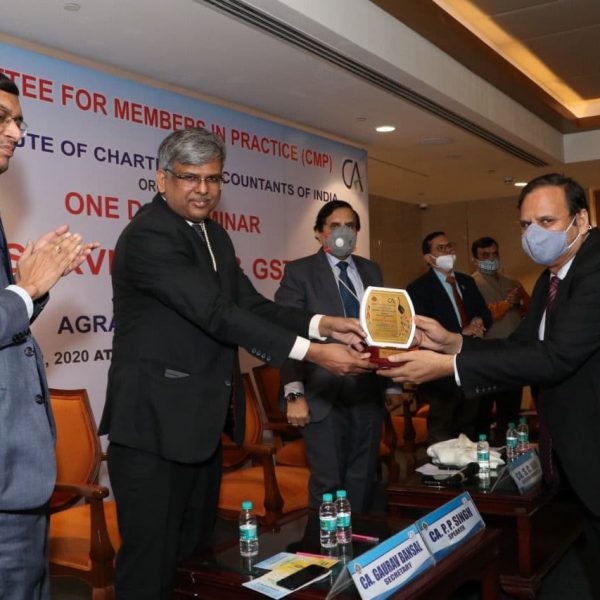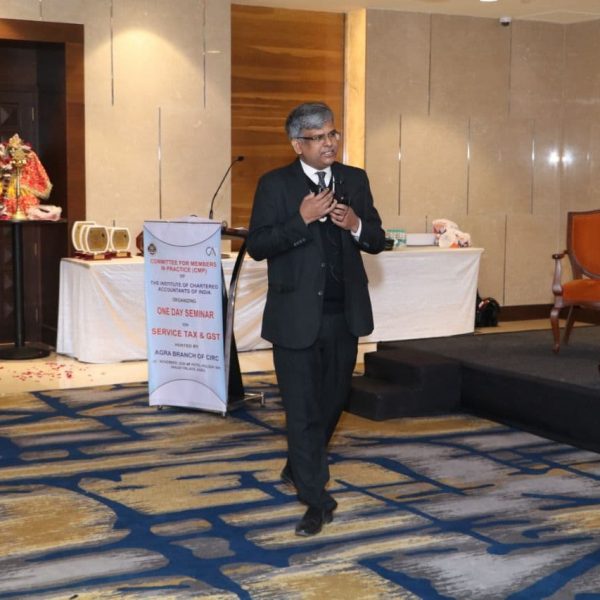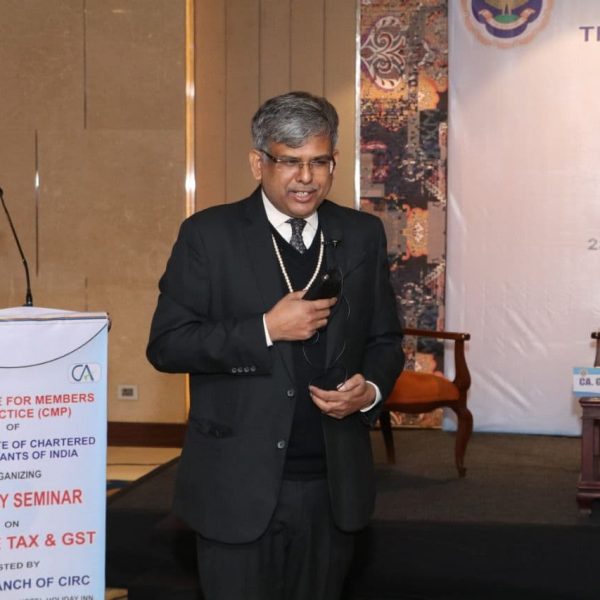Doctrine of Severability
Meaning: This doctrine of severability is also known as the doctrine of separability. The word “to the extent of the inconsistency or contravention” makes it clear that when some of the provisions of a statute become unconstitutional on account of inconsistency with fundamental rights, only the repugnant provision of the law in question shall be treated by the courts as void, and not the whole statute. The doctrine of severability means that when some particular provision of a statute offends or is against a constitutional limitation, but that provision is severable from the rest of the statute, only that offending provision will be declared void by the Court and not the entire statute.The doctrine of severability says that if good and bad provisions are joined together by using the words ‘and’ or ‘or’ and the enforcement of a good provision is not made dependent on the enforcement of the bad one that is the good provision can be enforced even if the bad one cannot or had not existed, the two provisions are severable and the good one will be upheld as valid and given effect to. On the other hand, if there is one provision that is capable of being used for a legal purpose as well as for an illegal one, it is invalid and cannot be allowed to be used even for legal purposes. In this doctrine, the whole act is not held invalid for being inconsistent with the Part III of the constitution which is given to the citizens of India. It is only those parts that are inconsistent and are violative of the fundamental rights. But just the part which violates the fundamental rights is separable from that which does not isolate them. If it is there that the valid portion is combined with the invalid portion and it is impossible to separate them, then in such cases, the court will leave it and declare the whole act void. This process of doing it is known as the doctrine of severability.
The Hon’ble Supreme Court of India has used this doctrine in the case of A.K Gopalan vs State of Madras, it was held by the court that the preventive detention under section 14 of the Preventive Detention Act 1950 is inconsistent with A-22 of the Constitution of India and therefore it should be removed from section 14 then it would be valid and by removing this will not affect the act and it will remain valid and effective.
The doctrine was further applied in D.S Nakara vs Union of India where it was that the act remained valid and the portion which was not consistent was declared invalid and this was because it was easily separated from the valid part. Also, in State of Bombay vs F.N Balsara here it was held that the provision of the Bombay Prohibition Act, 1949 where the entire act was declared void and it did not affect the rest of the part and there was no need to declare the whole statute as void.
The doctrine of severability was even used in the case of Minerva Mills vs Union of India where sections 4 of the 42nd Amendment Act, 1976 was struck down for being beyond the amending power of the Parliament and then it had declared the rest of the Act as valid. Then in another case of Kihoto Hollohan Vs Zachillhu which is very famously known as the defection case. In this case, paragraph 7 of the Tenth Schedule which was first inserted by the 52nd Amendment Act of 1985 was declared unconstitutional because it had violated the provisions under Article 368(2). But, the whole part was not declared unconstitutional. So, the rest of the Tenth Schedule excluding paragraph 7 was upheld by the Constitution.
The doctrine of severability was considered by the Supreme Court of India in the case of R.M.D.C vs Union of India and the rules regarding severability were laid down in this case-
The intention of the legislature behind this is to determine whether the invalid portion of the statute can be severed from the valid part or not and if both the valid and invalid parts can’t be separated from each other then the invalidity of the portion of the statute will result in the invalidity of the whole act.
Even if the invalid portion is separate from the valid portion, It is the power and duty of the courts to declare a law which is inconsistent with the constitution of India to be unconstitutional. The foundation of this power of judicial review as it was explained by a nine-judge bench is the theory that the constitution which is the fundamental law of the land, is the will of the people, while the statute is only the creation of the elected representatives of the people, when therefore the will of the legislature as declared in a statute, stands in opposition to that of the people as declared in the Constitution, the will of the people must prevail.
Also, the power to annul the acts of the executive and the judiciary which violates the constitution is given by the Constitution itself in the judiciary. But, the same is not part of the legislature which is the creature of the constitution or one can say a law-making body. It is not correct to say that the views of the legislators must prevail because they are answerable to the people. In determining the constitutionality of a provision the court will first question whether the law is constitutional or not because there will be a possibility that it might be contravening a lot of articles that are enshrined in the Constitution.
The Indian Constitution guarantees certain fundamental rights to citizens as well as non-citizens. These sacrosanct fundamental rights are contained in Part III of the Constitution. Article 13 of the Constitution provides that laws in contravention of these fundamental rights are void.
However, in certain cases, only certain specific provisions of a statute are violative of the Constitution, while the remaining portions are valid. In such cases, the courts read down and invalidate only the inconsistent provisions and retain the remaining portions. This is known as the doctrine of severability. The doctrine of severability was evolved by the English courts and has been adopted by the Indian courts. This doctrine is also recognized in several other jurisdictions.
Since the doctrine of severability is applied only where a law is found to be contravening fundamental rights, it is evident that a plea to apply the doctrine of severability can be taken by only those persons who are granted fundamental rights under the Constitution.
Practice of doctrine of severability
The practice of Doctrine of Severability has been in practice for a very long time and it is not a new thing. It has been adopted in many countries like the United Kingdom, Australia, the United States of America, Malaysia as well in India. In England, United Kingdom the doctrine of severability goes back to when it originated in the case of Nordenfelt v. Maxim Nordenfelt Guns and Ammunition Company Ltd. In this case, in other countries like the United States of America, the first case of the doctrine of severability was decided in the year 1876. After this, a question evolved which question if Congress knew about the invalid portion had it enacted it the first time. In this particular case, the case was centered around the Fifteenth Amendment of the American constitution which spoke about voting rights not being denied to American male citizens based on colour or race etc.
Then in the very popular case of Champlin Refining Co. v. Corp. Commission of Oklahoma an oil refining company challenged several provisions of the Oklahoma statute which further argued the various provisions that had violated the Commerce Clause and even the Fourteenth Amendment that talks about the due process and equal protection clauses. And in determining whether any of these or any one of them could be struck down and further separated from the residue of the oil and gas statute at issue. In the year 2006, the Supreme Court of the United States of America propounded the three principles as an underlying rationale. Then in the case of Ayotte vs. Planned Parenthood of N. New Eng., here also the court had laid down the three principles of severability.
In another case which is Cardegna. Vs Buckeye Check Cashing was in the year 2006 when the defendant which was the Buckeye took a loan amount from a subsidiary that was a business. Later on, he took another loan amount which was higher than the loan amount which was previously taken and then he was later unable to pay it back. He then filed a class action suit with the help of a lawyer. The suit was regarding the interest rates charged by the plaintiff were higher when compared with others that were charged by the company which were at least 45 percent higher than the prescribed normal rates. But, the court in Florida stated that it is not only one part of the contract that could be challenged but it needs to be the whole contract. And so this means that the doctrine of severability which earlier was thought could be applied cannot be applied now. Further, the Hon’ble Supreme Court gave the decision and declared that the whole of the contract was void ab initio on the grounds that such void contracts that are absolutely void and useless from the initial stage itself.
The doctrine of severability has now become part of the Western world but also has spread to the Eastern countries of the world. Like from India to Malaysia and in Malaysia this doctrine was evolved in the very popular case which is Malaysian Bar & Anr. V. Government of Malaysia. When we talk about India with respect to the doctrine of severability then we need to study and understand how Article 13 of the Indian Constitution came into being. This doctrine works when it becomes evident that any part of the law offends the Constitution. When we talk about in the context of the Indian Constitution then it will be the fundamental rights which is guaranteed by the Constitution. So, this doctrine will work especially when subjected to this part which is Part III of the Indian Constitution.
Constitutional justification of the doctrine of severability
The application of the doctrine of severability for saving the valid parts of partly invalid provisions is justified by the use of the expression ‘to the extent of’ in Article 13 of the Constitution. Article 13 expressly states that a law in contravention of the provisions of the Constitution shall be invalid only to the extent of the inconsistency. Thus, the part of the law that is consistent with the constitutional provisions should be saved by the application of the doctrine of severability. It is necessary that the valid part be severable in application or severable in enforcement from the invalid part.
Similarly, Articles 251 and 254 also provide that when there is a conflict between the state law and the union law relating to a matter enumerated in the concurrent list, the union law would prevail and the state law would be rendered inoperative only ‘to the extent of’ the repugnancy.
Thus, it is evident that the makers of the Constitution themselves envisaged the application of the doctrine of severability.
General principles of the doctrine of severability
As per the general rule, where a rule contains a valid and an invalid part and the valid part is severable from the invalid part, the invalid part should be omitted and the valid part should be retained. If the invalid part can also be saved by reducing its scope, then it should be retained and read down to reduce its scope.
Where the provision under consideration is in the nature of an exception to the general scheme of the statute, the mere invalidity of the general provision will not imply the invalidity of the entire statute. The general scheme would be void only if it is established that the exception is inherently and intimately linked with the general provisions.
It is not necessary for the court to even strike down a complete provision. Where the objectionable and valid parts are contained in the same section and the two parts are distinct and severable from each other, then the court may invalidate only the objectionable part.
The doctrine of severability can be applied to the decisions of the courts as well as quasi-judicial bodies.
There are two primary factors that the courts consider while determining whether the doctrine of severability should be applied or not. The first factor is the legislative intent. If the courts find that the legislative intent behind the enactment of the concerned statute favours severance, then the courts will apply the doctrine. The second factor is public interest. The courts apply the doctrine of severance only if it is evident that the application of this doctrine would serve the public interest.
The doctrine of severability can be applied to invalidate the unconstitutional portion of a provision that is not related to the overall object of the statute. Thus, the unconstitutional portion can be separated and severed from an otherwise constitutional provision. This process of omitting an unconstitutional portion does not amount to judicial legislation.
- M. D. Chamarbaugwalla v. Union of India (1957) Criminal Litigation
In the case R. M. D. Chamarbaugwalla v. Union of India (1957), the Supreme Court laid down the guidelines relating to the application of the doctrine of severability. In this case, the constitutionality of the Prize Competition Act, of 1955, was challenged, which imposed a prohibition on games of chance as well as games of skill. Applying the rule of severability, the Court held that the part restricting the games of skill was ultra vires, while the remaining statute was saved. The Apex Court enumerated the following:
The intention of determination is of paramount importance while deciding whether the doctrine of severability should be applied to a particular legislation or not. In determining the intention of the legislature, the court should refer to the history of the Act, the internal and external aids to interpretation, and the mischief that the legislation intends to address.
The court should consider the question as to whether the legislature would have enacted the valid portion if it knew that the invalid portion was ultra vires.
If the court finds the answer to the aforementioned question to be positive, then the court can apply the doctrine of severability.
This doctrine can be applied only in those cases where the valid and invalid parts can be severed. This doctrine cannot be applied where the valid and objectionable portions are inextricably linked in such a manner that they cannot be severed. In such cases, the entire statute will have to be struck down on the grounds of being ultra vires or unconstitutional.
Similarly, the entire statute will have to be struck down if the effect of severance is such that the valid residue part becomes substantially different from what the legislature intended it to be.
Chintaman Rao v. State of Madhya Pradesh (1950)
Facts of the case:
In Chintaman Rao v. State of Madhya Pradesh (1950), the government enacted a law to prohibit agricultural labourers from being engaged in the manufacture of beedis. The purpose of the law was to facilitate greater production of food crops and to ensure that adequate labour was available for agricultural purposes. The law authorised the Deputy Commissioner to prohibit the agricultural labourers of a particular notified region from being engaged in bidi manufacture during the agricultural season.
Issue
The Deputy Commissioner issued an order prohibiting all persons residing in the notified villages from undertaking work in bidi manufacturing. The order was challenged on the grounds of being violative of the fundamental right to carry on any trade or occupation contained in Article 19(1)(g) of the Constitution.
Decision of the Court
The Supreme Court found the law to be violative of the fundamental rights of the people in the villages. The Court observed that the order of the Commissioner prevented not only the agricultural labourers but also the old, infirm, women, and other persons from working in the beedi manufacturing activities. Thus, those who could not be employed in agricultural activities were also restricted from undertaking beedi manufacturing work.
The Court observed that the portion of the law that imposed restrictions on agricultural labourers could not be separated from the portion imposing restrictions on other persons. The language used in the Act was wide enough to cover both constitutionally permissible and impermissible restrictions. Thus, the doctrine of severability could not be applied to the case.
Expanding the scope of the Act
The doctrine of severability can also be instrumental in expanding the scope of the provision. There is no such principle that the operation of the doctrine of severability should always result in limiting the scope of the concerned statute. This doctrine may also be applied to expanding the width and scope of a statute.
The doctrine of severability may also be applied for the purpose of omitting the discriminatory portion of a statute while retaining the beneficial part.
D.S. Nakara v. Union of India (1982)
Facts: In D.S. Nakara v. Union of India (1982), the government initiated a new non-contributory pension scheme. However, the scheme was made applicable from a particular date, and the benefits were available only to the persons who retired after the stipulated date. The persons who retired before the prescribed date were not entitled to the benefit of the scheme.
Arguments
The petitioners contended that the discriminatory portion should be read down by applying the doctrine of severability. However, the Attorney General pleaded that the legislature has the competence to determine the scope of the beneficial legislation. The judiciary would be transgressing into the legislative field by applying the doctrine of severability to expand the scope of the scheme. Lastly, the Attorney General submitted that the doctrine of severability should always cut the scope of the scheme and not enlarge it.
Judgment
The Supreme Court held that the classification on the basis of the date of retirement was arbitrary and violative of Article 14 of the Constitution. Thus, the Court applied the doctrine of severability and read down the provision making the classification on the basis of retirement date. The scope of the Act was thus enlarged, and the people who retired before the prescribed date were also brought within the purview of the Act.
The Court observed that the reading down of the objectionable portion would not make the overall scheme vague or unenforceable, and thus, there was no difficulty in severing the illegal and arbitrary portion.
Article 14 of the Constitution targets arbitrariness, and if an arbitrary portion of a statute can be omitted by the application of the doctrine of severability, then the same should be struck down while retaining the overall scheme.
Whether one could challenge the constitutionality of a law?
One can challenge the constitutionality of law but only if our rights are directly affected by a law. Then only we can question the constitutionality of the law. It follows in such ways “When a person is outside the class that might be injured by the statute then he has no right to complain. Then where a statute affects bona vacantia, then there is no person who is competent to challenge the validity of such statute. Again, where the statute operates as a contract, either party to the contract is entitled to challenge the validity of the statute.”
Presumption taken by the courts
It is always on the person who attacks and tries to show that it is contravening the constitution then it is him on whom the burden is to show the courts that while performing their duties. it has the constitutional principles and guidelines while laying down its decisions as it said in the case of Chiranjit Lal Chowdhury vs The Union Of India And Others. If it happens that the challenge is not on the provisions of the Constitution then the courts have to consider and make sure that it is intra vires and try to interpret the same. So, it is clear that the burden fully lies upon the person who questions the decision and challenges it in a court of law.
If something happens and the constitutionality of the act is challenged then the person must show that he has sustained some injury as a result of that or that he/she is in immediate danger of sustaining some direct injury as a result of the statute or law coming into force. And if it even abridge the fundamental rights of the person in any form then the aggrieved person has all the powers to approach the courts without waiting or delaying for the State to take some or any type of action. And if it happens that the person does not possess any of the fundamental rights then he/she cannot challenge the validity of the law on the grounds that it is inconsistent with a fundamental right. Even a corporation has a legal entity separate from that of its shareholders. Hence, in the case of corporations, whether the corporation itself or the shareholders would be entitled to impeach the validity of the statute and this will depend upon the question of whether the rights of the corporation or of shareholders have been affected by the statute that has been impugned.
When it happens that the fundamental rights of the company is impugned by the statute then it also affects the interest of the concerned shareholders then in such cases the shareholders also impugns the constitutionality of the statute. In such situations what happens is that the joinder of the company as co-petitioner would not bar relief to the shareholders even though the company is not a ‘citizen’ and so would not be entitled to relief. Also, the possibility of financial relief due to the management of the company being taken over by the government is sufficient to give locus standi to a shareholder.
Effects when a law is declared unconstitutional
Article 141 of the Constitution of India says that the honorable Supreme Court of India is binding on all the courts which is within the territory of India. For example, once any law or statute is declared unconstitutional by the Supreme Court of India then it shall be from that date onwards will be binding on all lower courts in India. The effect of this is that the decision operates as a judgment in rem against all the persons who may or are going to seek relief in any court in India. So, in further proceedings, there is no onus on the party to be affected to establish its unconstitutionality again and then the court is bound to reject the law which is declared as invalid by the honourable Supreme Court.
The same thing is applied when the law has been declared to be unconstitutional partially. If the law is sought to be enforced in a case then in such cases no notice is to be taken by the Court of that part which has been declared by the Supreme Court as unconstitutional. In other words, it means that the Court will read the Statute in such a manner that the part of the section which has been declared as invalid as never existed before. If it happens that the person is prosecuted for the contravention of the section which has been declared as invalid then no onus is cast upon the accused to prove that his/her case falls upon and under that part of the section which has been held invalid. On the other hand, it happens that the prosecution cannot succeed unless it is proven that the accused has contravened that part of the section which is enforceable and valid after the honourable Supreme Court decision.
No distinction is made where a case where the law is declared to be invalid because of the lack of legislative competence and a case where it is declared invalid on the ground of contravention of a fundamental right. Even Article 245(1) of the Constitution of India lays down very specifically that the legislative power whether it is of Union or of a State Legislature is and will always remain subject to other provisions of the Constitution. The result is that when a legislature makes any law which is contravening a provision of the Constitution like say any of the fundamental rights then the position will remain the same as if they had no power to legislate over the subject-matter of the legislation at all. Then, accordingly, the declaration of invalidity of the law by the honourable Supreme Court goes through the legislative power in either of the cases as held many cases by the court itself.
Effects on unconstitutional statute due to constitutional amendment
Earlier back in the days there were a lot of confusion upon this topic when there is a constitutional amendment and because of this there is some effects on the unconstitutional statute. The ‘doctrine of eclipse’ can be invoked in the case of pre-constitution law which was valid when it had been enacted. But, there was some inconsistency with the constitution which came into existence subsequently, if and when the shadow is removed, the pre-constitution law becomes free from all kinds of infirmity. But the thing is that the principle cannot be invoked in the case of a post-Constitution law which is void ab initio. In view of Article 13(2), the fundamental rights constitute express limitations upon the legislative power of a legislature making a law after the commencement of the Constitution and no distinction can be drawn between a post-Constitution law which is ultra-vires that is beyond the legislative competence of the legislature and a law which contravenes a fundamental right. It is that a post-Constitutional law that violates a fundamental right is void ab initio and no subsequent amendment of the Constitution can revive such still-born law unless such amendment is retrospective.
Power of a legislature when a statute is declared unconstitutional
When a statute is declared unconstitutional by a Court of law then the Legislature cannot directly override that decision which is taken and further pronounce the statute to have been valid on the date of judgment. It is, however, so that the competence of the Legislature to a new law that is further free from unconstitutionality and then provides that anything done under the offending law shall be deemed to have been under the new law and subject to its provisions.
Effects of a proclamation of emergency upon the unconstitutional statute
A Proclamation of Emergency which is made under Article 352 is prospective in its operation. Article 358 in the Indian Constitution frees the Legislature from the limitation that is laid down in Article 19 during the proclamation of emergency means during its continuance. But it does not operate to validate a law which is enacted prior to the Proclamation which was invalid owing to the contravention of Article 13(2). Then such laws will be void ab initio and cannot be revived by the proclamation of the emergency. So, now if any executive action is taken in the exercise of any power in the hands of such a void law will also be invalid. Even though such action takes place after the commencement of the Proclamation or a continuation of pre-Constitution executive action.
Whether right could be waived?
The important question which has been there over the years was that whether a fundamental right could be waived which has been answered by the Constitution Bench of the honorable Supreme Court. Like for example in the case of Behram vs State of Bombay where the honourable Venkatarama J.had expressed the view that such of the rights as are for and in the interest of the individuals and are totally different from the interest of the general public, could be waived accordingly even the right which is guaranteed by Article 19(1) which also comes under this category.But everyone else didn’t have the same viewpoint, the majority included Mahajan, C.J., Mukherjee, Bose and Hasan, JJ. expressed the viewpoint even without deciding the question which was mainly for the good of the individuals. This has also been laid into our Constitution on grounds of public policy and in pursuance of the objective declared in the Preamble itself. So, in the end, the conclusion is that none of the fundamental rights could be waived.
Then again in the case of the Basheshar v. Commr. Of I.T., Justice Bhagwati and Subba Rao, JJ. have held that a fundamental right being in the nature of a prohibition addressed to the State, none of the fundamental rights in our Constitution can be waived by an individual and this declaration was given with what the majority have viewed in the Behram’s Case.
In the very famous case of Olga Tellis vs Bombay Corpn. where the Constitution bench has unanimously held that there cannot be any estoppel against the Constitution which is the supreme law of the land. Also, a person cannot waive any of the fundamental rights conferred upon him by the Constitution itself which is stated in Part III. In many of the cases there have been situations where the courts without even entering into the question of waiver, the Court has held that a person who has applied for an appointment to an office by an Act is not prevented from challenging on the ground that it violates his or her fundamental right which is guaranteed under Article 16.
Effect of acquiescence
There have been cases over the years where it has been held that if a person has gained any kind of benefits under statute then he/she cannot challenge its constitutionality or its validity in any case. In the case of Nain Sukh v. State of U.P. where the Supreme Court observed that a person who had been allowed to contest an election being conducted on the basis of separate electorates which is formed on the communal lines then he or she cannot seek remedy under Article 32 of the Constitution of India after they are done with the election.
The doctrine of severability and arbitration
The doctrine of severability is also applicable to the arbitration proceedings initiated under an arbitration agreement. The doctrine of severability has been incorporated under Section 16 of the Arbitration and Conciliation Act, 1996.
As per Section 16, an arbitration agreement is to be severed and considered separately from the contract that contains the arbitration agreement. Thus, even if the parent contract is held to be invalid, the arbitration clause would survive. Similarly, the invalidity of the arbitration clause will not affect the legality of the parent contract. The courts are to determine the legality of the parent contract and the arbitration clause separately and independently of each other.
Heyman v. Darwins (1942)
The doctrine of severability was first applied to arbitration cases by the House of Lords in the case of Heyman v. Darwins (1942). In this case, the parties had entered into an agency contract that contained a broad arbitration clause. The respondent repudiated the contract, and the appellant sought damages for the injury caused due to the repudiation. The appellant had filed a writ petition claiming damages.
The respondent contended that the parties should be referred to arbitration as the contract contained an arbitration clause. The appellants contended that the contract ceased to have effect upon repudiation by the respondents, and thus the arbitration clause was not applicable.
However, the House of Lords applied the doctrine of severability and held that the mere repudiation of the contract would not suspend the arbitration clause. Repudiation would not affect the right of the parties to seek remedy through arbitration. The reasoning given by the court was that the respondents had repudiated the contractual obligations owed to the appellants and not the arbitration clause. The Court also observed that the purpose of the contract is distinct and separate from the purpose of the arbitration clause. Thus, the arbitration clause would continue to have effect.
Arbitral Awards
The doctrine of severability is not only applicable to arbitration contracts but also to arbitral awards. Section 34 of the Arbitration Act provides for making an application before a court of law for the setting aside of an arbitral award.
Section 34(2)(a)(iv) provides that an arbitral award can be challenged on the ground that it contains decisions of matters and disputes that were not submitted to arbitration or that were beyond the jurisdiction of the arbitral tribunal. This provision expressly states that if the portions of the arbitral award that deal with matters within the arbitral tribunal’s competence can be severed from the portions that deal with matters beyond the tribunal’s competence, then only the objectionable parts should be set aside and the residue award should be upheld.
In the recent case of NHAI v. Trichy Thanjavur Expressway Ltd. (2023), an application was filed before the Delhi High Court for setting aside an arbitral award. The Delhi High Court found that certain parts of the arbitral award were objectionable and liable to be set aside. The Delhi High Court held that the doctrine of severability can be applied to arbitral awards under Section 34(2)(a)(iv), where the objectionable portions can be severed from the overall award without affecting the good parts of the award. It is essential that the valid part be independent and not have any correlation with the invalid part. Applying the doctrine of severability, the Court invalidated the objectionable part of the award and retained the remaining portions.
International perspective
The international conventions and practices also recognize the application of the doctrine of separability to arbitration agreements. The principle is incorporated in Article 16 of the Model Law formulated by the United Nations Commission on International Trade Law (UNCITRAL), which states that a decision by the arbitration tribunal holding the parent contract to be null and void will not ispo jure imply that the arbitration clause is also invalid.
Similarly, Article 23 of the UNCITRAL Arbitration Rules, 2010 also provides that the illegality of the contract does not automatically effectuate the arbitration clause.
US perspective on the doctrine of severability
The doctrine of severability is also an integral part of the legal system of the United States of America. The doctrine of severability is considered to be a form of statutory interpretation where the courts interpret the manner of operation of a statute once they conclude that a part of the statute is constitutionally invalid.
The US courts maintain a strong presumption in the favour of severability. The court refuses severability only when it is conclusively established that the legislative intent was opposed to severability. If the residuary valid portion that would be left after severing the invalid part is capable of functioning as an independent scheme, then the courts incline in the favour of severability.
Murphy v. National Collegiate Athletic Association (2018)
Facts : In the recent case of Murphy v. National Collegiate Athletic Association (2018), the validity of the Professions and Mateaur Sports Protection Act, 1992, was challenged before the United States Supreme Court. This Act prohibited the States from promoting, endorsing, or sponsoring sports gambling. The Act defined amateur sports organizations as any governmental entity that scheduled, organised or sponsored the conduct of any sports competition in which one or more amateur sportsmen participated. In cases of violation of the provisions of the Act, the Attorney General could initiate a civil action in the District Court of the concerned district.
Issue
The provisions of this Act were challenged on the ground that they violated the anti-commandeering doctrine. The anti-commandeering doctrine forms part of the 10th Amendment and provides that the federal government can direct state officials to enforce the federal laws. New Jersey had challenged the law on the ground that it prohibited the states from modifying or repealing their gambling regulation laws and thus violated the anti-commandeering doctrine.
Judgment
The US Supreme Court held that since the Act prohibited the states from licensing the schemes relating to sports gaming, it issued a direct order to the states and thus breached the anti-commandeering doctrine. The Court then considered the possibility of the application of the doctrine of severability. While determining the applicability of the doctrine of severability, the Court has to find the answer to the question – “Would Congress still have passed the valid sections ‘had it known’ about the constitutional invalidity of the other portions of the statute?” The doctrine can be applied only where the answer to the question is affirmative.
However, the Court held that the provisions of the Act were inextricably linked and could not be severed from each other.
Criticism to the doctrine of severability
While the doctrine of severability has been an integral part of Indian as well as other legal systems, there are certain grounds on which this doctrine can be criticized. These grounds are:
The doctrine of severability requires the courts to determine the legislative intent. The courts have to answer the question as to whether the legislature would have passed the concerned statute had it known that some parts of the statute were constitutionally invalid.
However, no legislature passed a statute with the idea that some part of it may be constitutionally objectionable. Thus, the courts have the dubious function of determining the intent that never existed. There is no evidence as to the actual intent of the legislature, and the hypothetical intent is based merely on the views of the courts.
The doctrine of severability gives the courts the power to excise or expand the scope of a particular statute. This may amount to a transgression into the legislative field.
The doctrine of severability also expands the scope of a particular suit or petition. The petitioner might have challenged a particular provision of a statute, but if the court determines that the provision is unconstitutional, then the validity of the entire statute comes under scrutiny. Once the court finds that the provision challenged by the petitioner is ultra vires, it goes on to examine whether the remaining provisions are valid and whether they can be severed from the objectionable provisions.
The exercise of this power becomes unjustified when the petitioner has no locus standi to challenge the constitutionality of the entire statute, but due to the operation of the doctrine of severability, the entire law comes under the scrutiny of the court. As per the general principle, a plaintiff has to establish the locus standi for every provision that he challenges. However, there is a visible departure from the general principle in the case of the application of the doctrine of severability.
Conclusion
The doctrine of severability creates a legal fiction that permits the courts and tribunals to separate the invalid part of the law from the valid and lawful part. Thus, the courts are able to declare the invalid provisions as ultra vires while retaining the overall statute. This doctrine has been recognized in England and other common-law countries as well.
The operation of this doctrine can have the effect of both limiting and expanding the scope of the concerned statute. In the case of beneficial statutes, the courts often apply the doctrine of severability to expand the scope of the beneficial legislation. This doctrine is also applicable to arbitration agreements and helps promote arbitration.
It is evident that the doctrine of severability also forms an integral part of United States constitutional law. There are many similarities between the general principles relating to the operation of the doctrine of severability in India and the United States.

